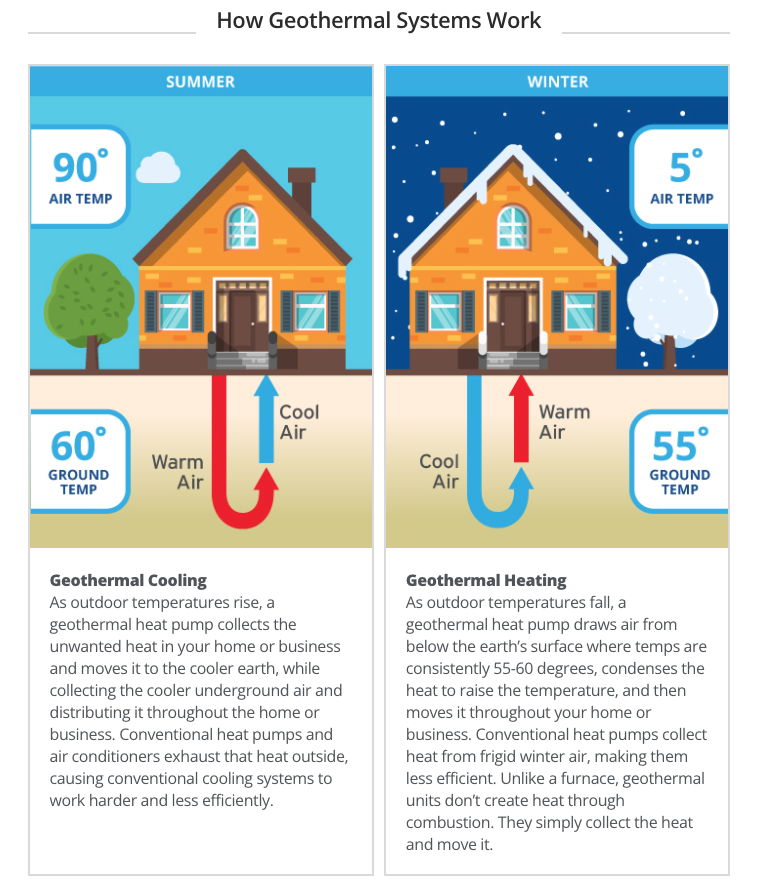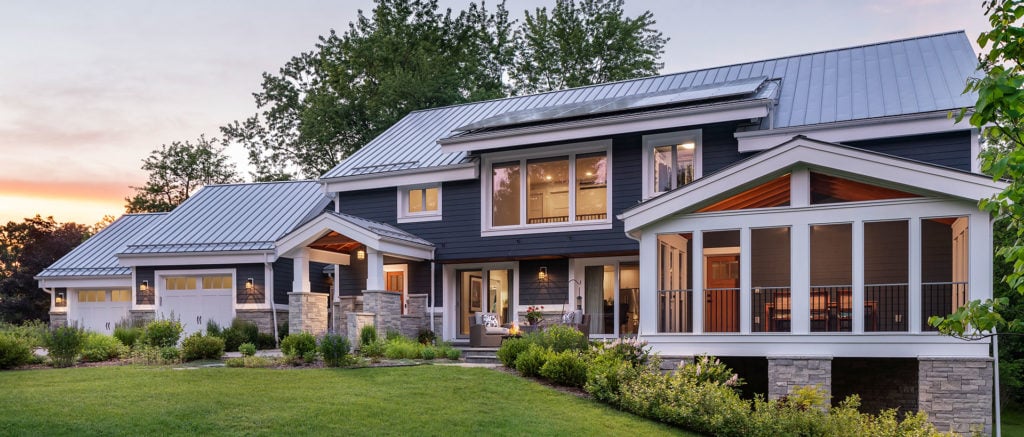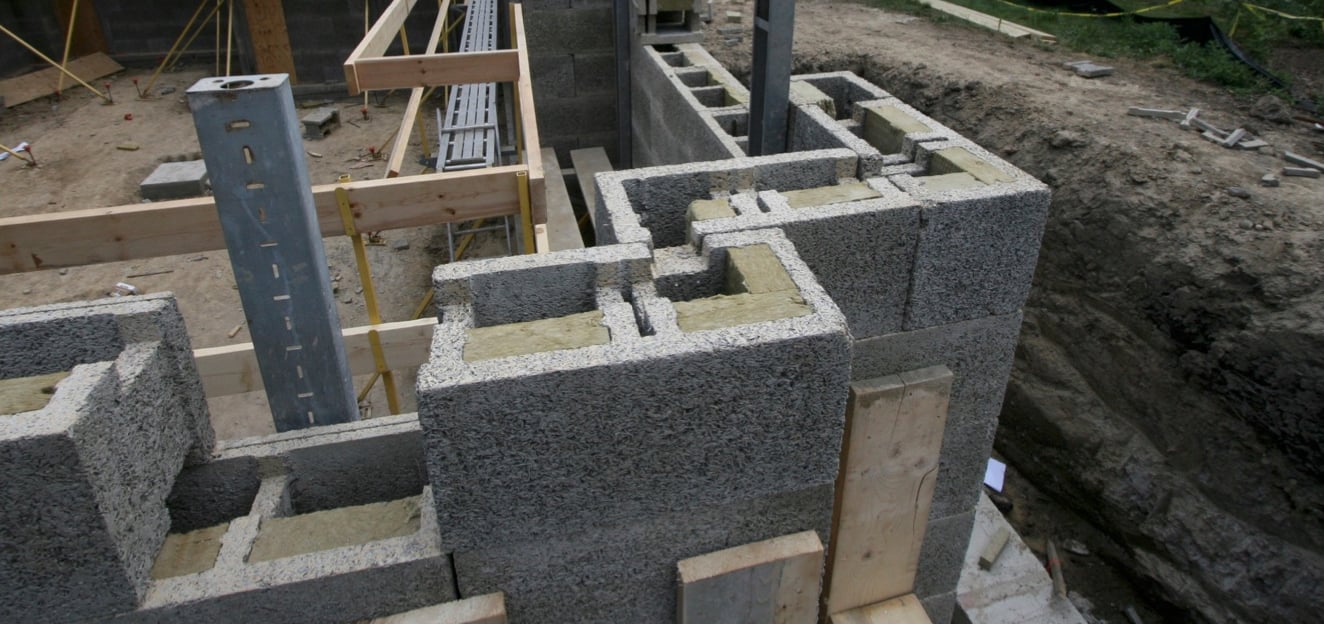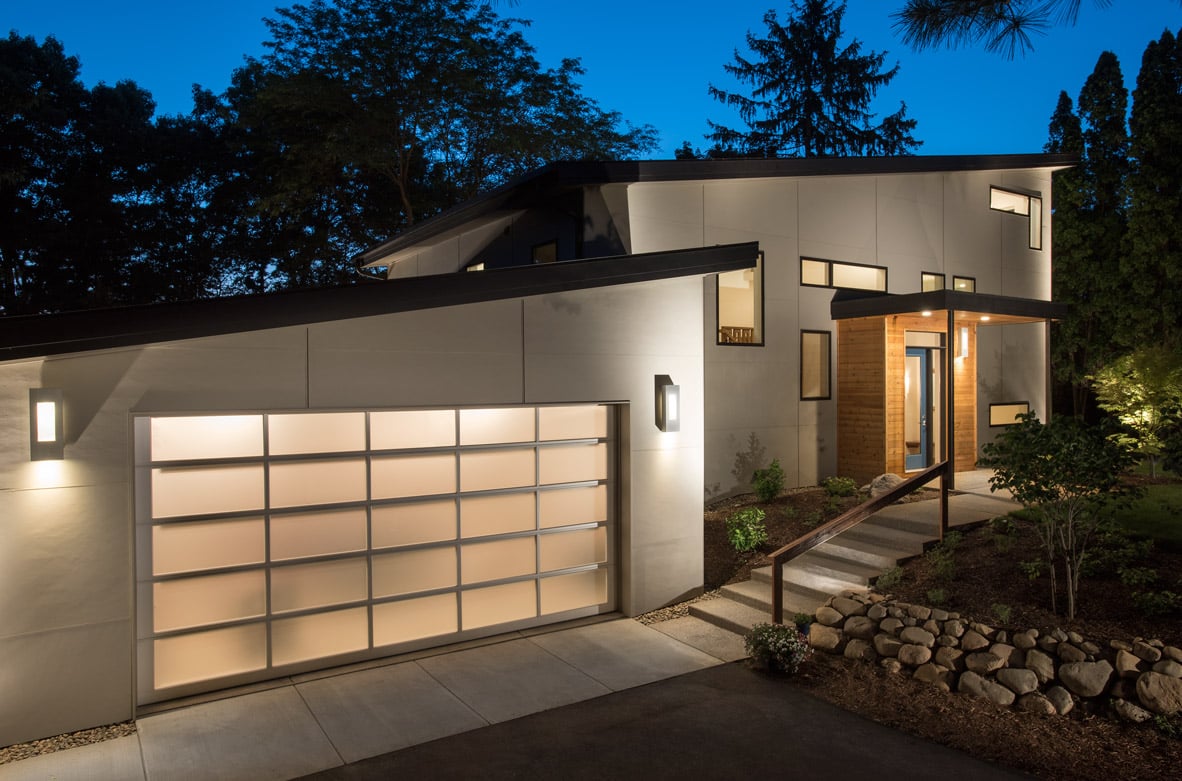3 min read
How Do Green Custom Homes Differ From Standard Built Homes?
What are the Differences Between Standard Building and Green Building? As a green custom home builder, we’re often asked how sustainable building...

Today, advanced green building technologies have allowed us to harness that consistent temperature and use it to heat or cool homes comfortably in a process called geothermal heating and cooling.
Starting about five feet beneath its surface, the Earth maintains a constant temperature with nearly infinite energy. In Michigan, that temperature is about 52°F — even though you may be experiencing a blistering summer day or week-long snowstorm above ground.
Geothermal heating and cooling systems can keep your home warm in the winter and cool in the summer, as well as freely supply a good portion of your hot water. Below, we’ll dive into a bit more on how these systems work and why they’re a great choice for your home, your utility bills, and your planet.
Geothermal heating and cooling systems are composed of two parts: a heat pump and a loop field. The heat pump is placed inside your house and is mainly responsible for heat exchange. The loop field, on the other hand, is the piping that is placed underground in your yard and what the air travels through.
The best way to think about how a geothermal heat pump works is to compare it to how your refrigerator or air conditioning system works. Using their refrigeration cycles, those devices convert a fluid from gas to liquid, and then vice versa, using a compressor and heat exchanger. This transformation of heat releases heat energy into a “heat sink” during the cooling cycle. For refrigerators, the heat sink is the air in your home. For standard air conditioner systems, the heat sink is air outside of your home.
 Photo Credit: DTE
Photo Credit: DTE
For geothermal heat pumps, the heat sink can switch between the ground and your home, depending on if you’d like to cool or heat your home. During the cooling process, geothermal heat pumps operate with the heat sink as the ground, which is significantly cooler than ambient air. This process is run in reverse for heating, drawing energy from Earth and using the air inside your home as the heat sink. Both processes can cool or heat your home far more efficiently than standard equipment.
Geothermal heating and cooling systems do use electricity to run the heat pump. However, for every unit of electricity they use, they can capture nearly 4.5 units of heating power and 3.5 units of cooling power. If you’re wondering why there’s a 1-unit difference between heating and cooling power, it's because the electrical energy used to run the system ultimately creates some heat by itself, and therefore works against the task of removing heat from your home. Regardless, both numbers for heating and cooling power produced prove that geothermal heating and cooling systems are extremely energy efficient.
As mentioned, your geothermal heat pump will be installed within your home. The loop field, however, can be installed in a variety of methods.
Most commonly, loop fields are installed as horizontal trenches on the lot, or as vertical fields drilled into the ground. Horizontal fields are cheaper and more efficient, but require a lot that’s big enough to make several 100-foot-long trenches. Vertical drilling works well on smaller lots where space is at a premium.
The maximum temperature a geothermal system can achieve is about 125°F, and traditional hot water or steam boiler systems don’t work efficiently with them. Instead, a geothermal system can be optimized to work best by creating a tight and well-insulated building envelope.
That being said, it’s important to view a geothermal heating and cooling system as just one part of a highly efficient home, not the end goal. Insulation and air-sealing are easy and inexpensive to install, and the money invested in them can frequently be offset by a smaller geothermal system that also costs less.
Since geothermal heating and cooling systems are so efficient, both DTE Energy and federal government agencies offer incentives for homeowners who use them. So while the upfront cost of geothermal systems is high, the payoff is desirable for both the planet and your wallet.
DTE Energy gives geothermal energy users a lower electrical rate during off-peak hours
The federal government also offers a 26% (for 2021 and 2022) unlimited tax credit for geothermal systems. With this tax credit, 26% of the total cost for all system components and installation labor is given back to consumers as a credit directly off their total tax bill.
When paired with an efficient building envelope, geothermal heating and cooling systems can bring average monthly heating and cooling bills to a fraction of what a standard HVAC system would cost. These savings and other incentives make geothermal systems a worthy investment, especially if you’re installing a new system anyway. If you’re interested in a more efficient heating and cooling system for your home, contact our experts at Meadowlark. We’re happy to help you find a solution that works for you!

3 min read
What are the Differences Between Standard Building and Green Building? As a green custom home builder, we’re often asked how sustainable building...

Nowadays, there are many advanced building techniques and technologies out there for you to choose from. And while many of them are great...

Green building is a building method that works to reduce or eliminate a building’s negative impact on the climate, the natural environment, and its...